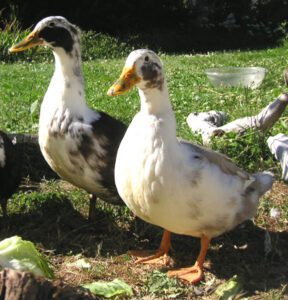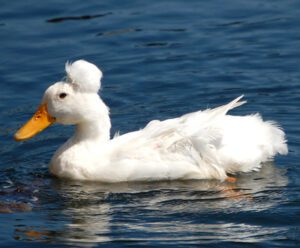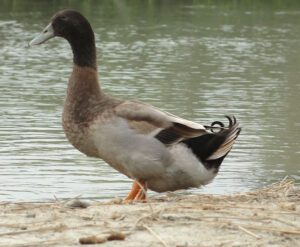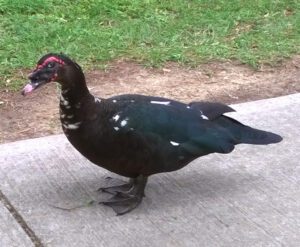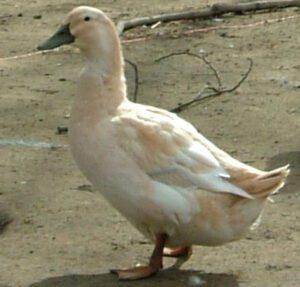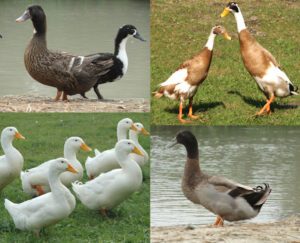The Mallard duck or wild duck is thought to be the most abundant and wide ranging duck on earth. Mallard duck belongs to the subfamity Anatinae of the waterfowl family Anatidae.
This ducks are the ancestor of all of our domestic duck breeds, except the Muscovy duck. The Mallard is a dabbling duck which breeds throughout the temperate and subtropical Americas, Asia, North Africa and Europe. They have been introduced to Australia, Argentina, Brazil, Chile, New Zealand, Peru, South Africa, Uruguay and the Falkland Islands.
Actually the Mallard duck is native to many countries. And they are best known and possibly the most abundant wild duck. Mallard duck is a very common sight in urban ponds, lakes and parks and other man-made water features in the regions they inhabit.
Mallard originally referred to any wild drake/male duck and it is sometimes still used this way. It was derived from the Old French malart or mallart for ‘wild drake’. Although the true derivation of the Mallards is unclear.
Mallard duck is also known as Canard colvert in French and Pato de collar in Spanish. Probably it is related to, or at least influenced by an Old High German masculine proper name Madelhart, clues lying ‘maudelard’ or ‘mawdelard’, the alternate English forms.
Masle/male has also been proposed as an influence. Today the number of Mallard duck is reducing due to excessive hunting and lack of wetlands. But it is still the most common and most abundant duck on Earth.
Mallard Duck Characteristics
The Mallard duck is classed as a medium sized duck. Although it is often slightly heavier than most other dabbling duck. Dabbling ducks are fed mainly at the surface rather than by diving.
Mallard duck is 50 to 65 cm long and has a wingspan of 81 to 98 cm. Among standard measurements, the bill is 4.4-6.1 cm, the tarsus is 4.1-4.8 cm and the wing chord is 25.7-30.6 cm.
The breeding Mallard drake has a glossy bottle-green head and white collar. This white collar demarcates the head from the purple-tinged brown breast, a pale grey belly and grey brown wings.
The drakes have black rear with the dark tail having white borders. The drake’s bill is a yellowish orange tipped with black. But the bill of the female Mallard is generally darker, ranging from black to mottled orange.
The female Mallard is predominantly mottled with each individual feather showing sharp contrast from buff to very dark brown. Such coloration is shared by most of the female dabbling ducks.
And the female Mallards have buff cheeks, eyebrow, throat and neck with darker crown and eye stripe. Both Mallard duck and drakes have distinct iridescent purple blue speculum feathers. And these feathers edged with white, prominent at rest or in flight (though temporarily shed during the annual summer molt).
Immediately after hatching, plumage coloring of the duckling is yellow on the underside and face with streaks by the eyes. And black on the back with some yellow spots, all the way to the top and back of the head. The legs and bill of the ducklings are also of black color.
Plumage of the duckling will start becoming drab after one month, looking more like the female. Although it’s plumage is more streaked. And it’s legs will lose dark grey coloring after one month. The duckling will be a juvenile two months after hatching, and the fledgling period will end.
The juvenile start flying between their three and four months of age, when it’s wings are fully developed for flight. The perfect time of flight for the juvenile can be confirmed by the sight of the purple speculum feathers.
At this stage, their bill will soon lose it’s dark grey coloring and their gender can finally be distinguished visually by three factors.
The breast feathers are brown in females and reddish-brown in drakes. The bill coloring is black and orange for females and is yellow in drakes. And the center tail feather is straight for females, but curled for drakes.
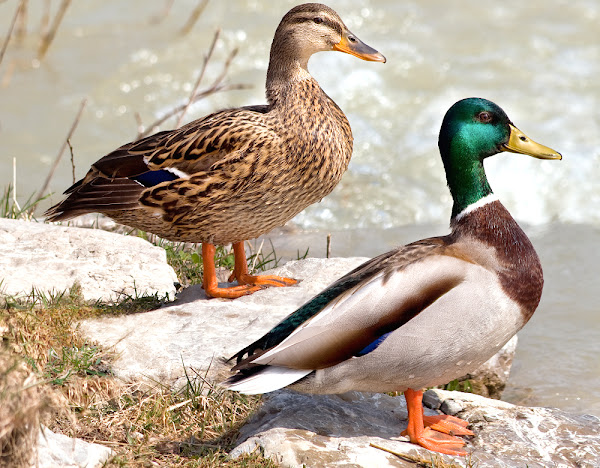
As a small to medium sized waterfowl species, average body weight of the Mallard duck is between 0.72 and 1.58 kg. Photo from Wikipedia.
Uses
The Mallard ducks are wild birds. Usually they are hunted widely. But they are also raised as pets or as ornamental birds.
Special Notes
The Mallard duck is a very beautiful and calm bird. Although they are wild birds, but they are easily domesticated and often group together with other species of ducks. They can live in almost any wetland habitat whether natural or artificial.
And it’s not surprising swimming on lakes, marshes, ponds, coastal habitats, as well as city and suburban parks and in residential backyards. Female Mallards go broody and are excellent mothers. If you are lucky enough, then you can find a Mallard’s nest on your property with some eggs.
Mallard ducks lay an egg every day until they have a full clutch. They usually lay about 8 o 15 eggs. After that the mother will start to sit on her eggs. And like most other ducks, it takes the eggs about 28 days to hatch, from when the duck started sitting all the time.
Upon hatching, the mother will soon lead them to a nearby body of water. The drakes or father do nothing in caring for the eggs or the young.
The Mallard duck is omnivorous and usually take a wide variety of food. The majority of the Mallard duck’s diet seems to be made up of invertebrates (which include flies, beetles, dragonflies, lepidopterans and caddisflies), gastropods, worms, crustaceans, many varieties of seeds and plant matter, and roots and tubers.
Average lifespan of Mallard duck in the wild is 5 to 10 years. However, review full breed profile of the Mallard duck in the following chart.
| Breed Name | Mallard |
| Other Name | Canard colvert in French and Pato de collar in Spanish |
| Breed Purpose | Ornamental, Pets |
| Special Notes | Calm, Excellent Foragers, Good as Pets, Excellent Mothers |
| Breed Class | Light |
| Broodiness | Excellent |
| Weight | 0.72 to 1.58 kg |
| Climate Tolerance | All Climates |
| Egg Color | Eggs color vary from creamy white, pale blue to blue-green without markings |
| Egg Size | Large |
| Egg Weight | 65-75 grams |
| Egg Productivity | Low |
| Flying Ability | Excellent |
| Rarity | Common (thought to be the most abundant duck on Earth) |
| Varieties | A Mallard green head, back rump and yellow bill. Sometimes they can also be Snowy or White |
| Country of Origin | Wild duck species. Native to many countries, but are most abundant duck in North America |

